Greenhayes ~ Paignton, Devon.
Client : Private.

Greenhayes is situated in Paignton, Devon. Paignton has its origins of being a Celtic settlement and is mentioned in the Domesday book as ‘Peintone’ in 1086AD. It now forms part of the borough of Torbay which is known as the ‘English Riviera’. At Greenhayes a section of garden wall had collapsed and we were asked to put it back.
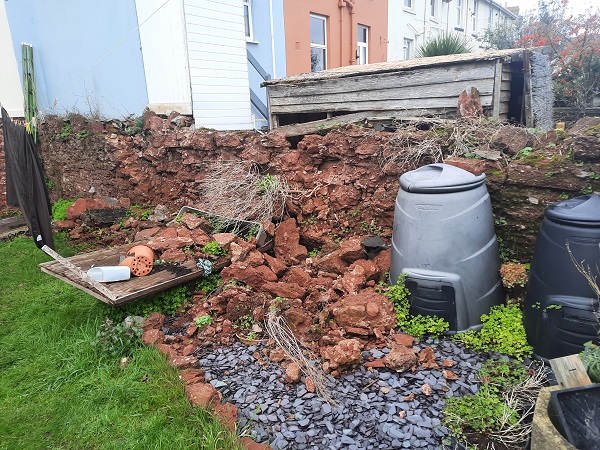
The wall had been built using a red sandstone, local to this part of the world. It also contained red brick. Our first task was to sort out the stone and brick and set that aside for re-use.
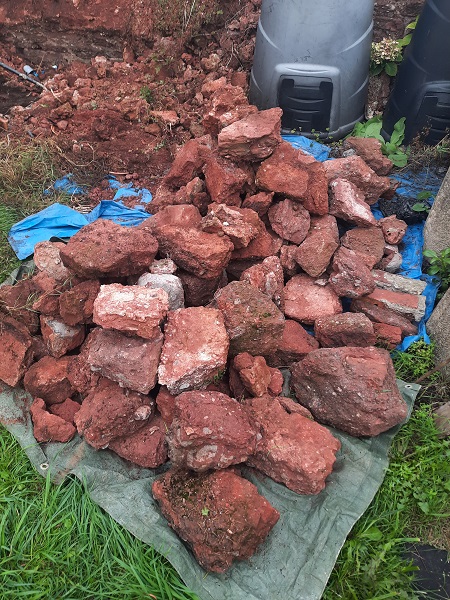
This wall is faced with stone on both sides. In essence it is two stone walls built back to back. Luckily for us only one side of the wall had collapsed and most of the neighbours side was still standing. We prepared the wall by removing all the loose stones and any remaining debris was brushed up.
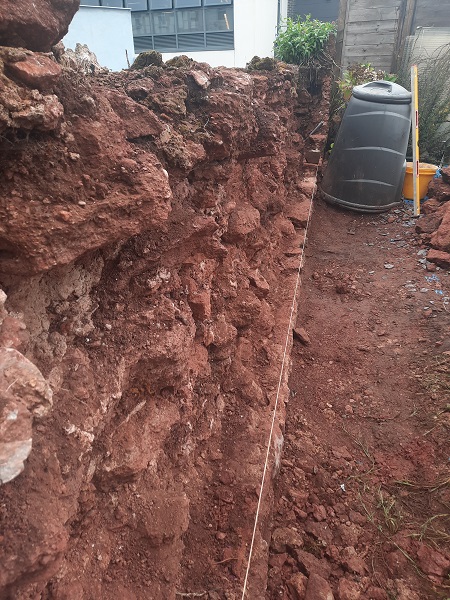
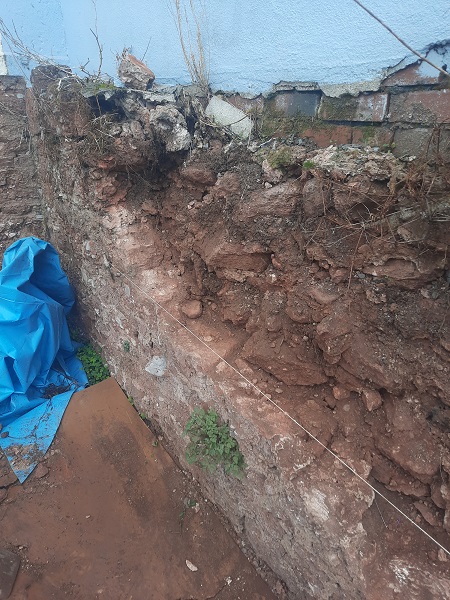
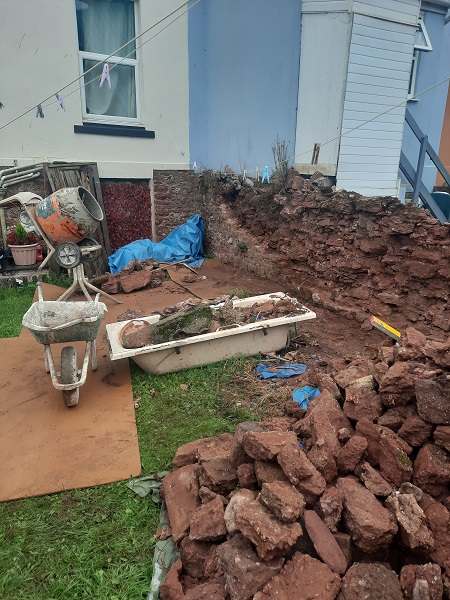
Work then got underway putting the stonework back up.
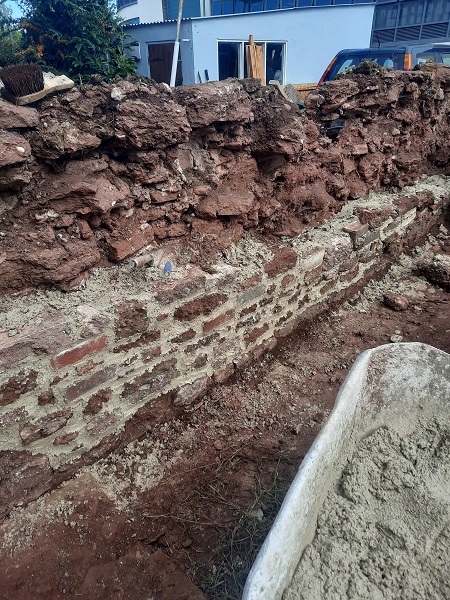
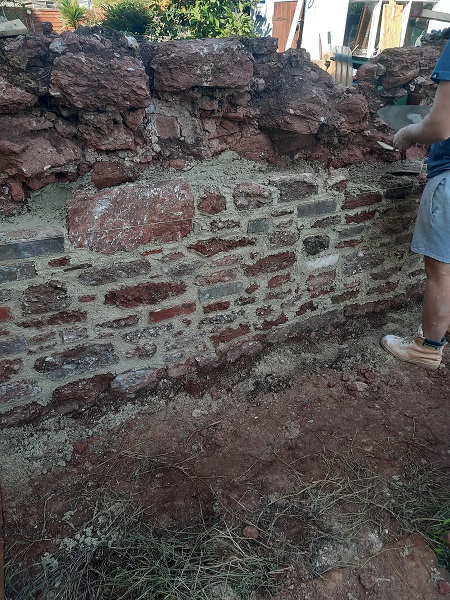
Traditional lime mortar was used to build the wall,
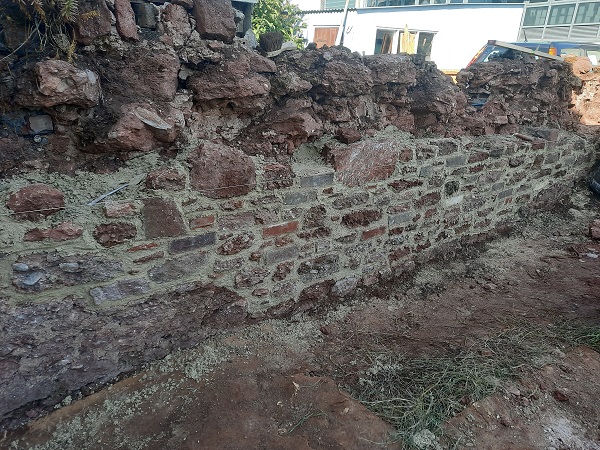
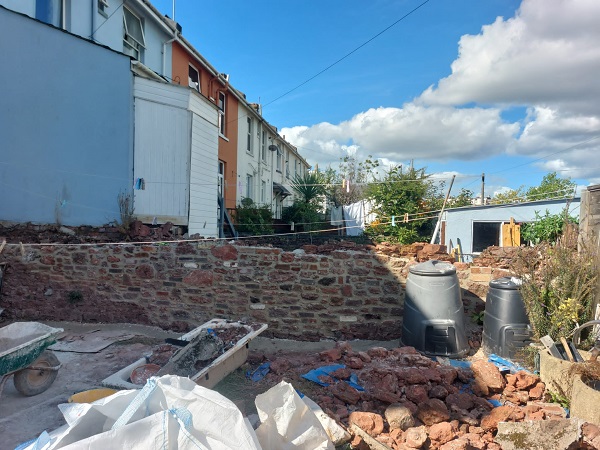
Once the stonework was up to height, it was time to sort out the top of the wall. For this we used the brick that we had salvaged and formed a castellated coping.
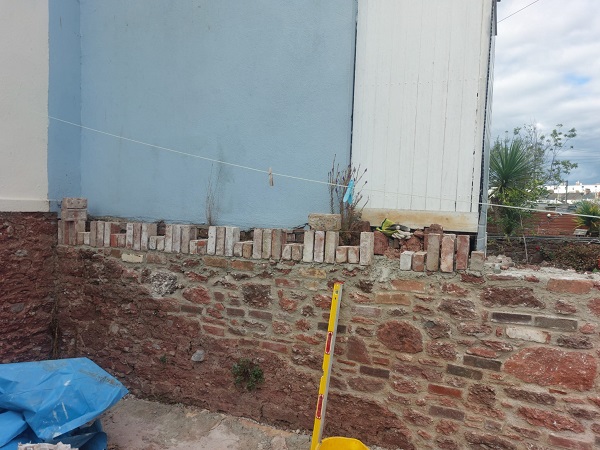
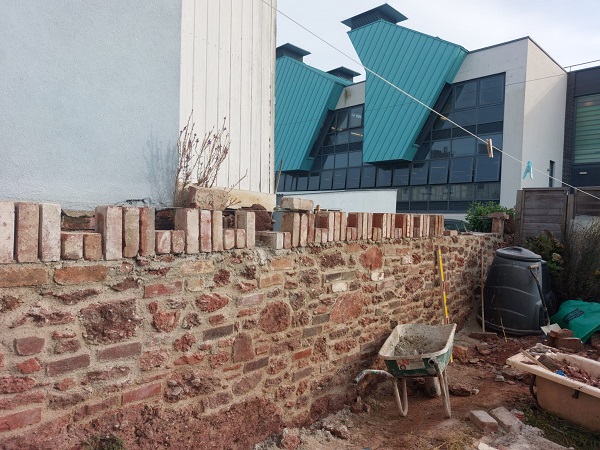
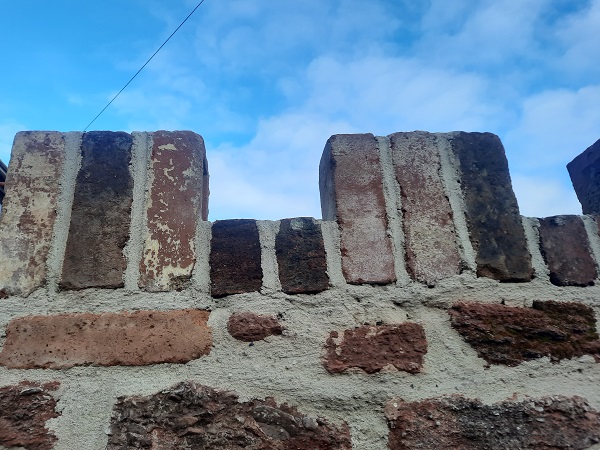
Once the bricks were set in, a screed was applied to the centre of the wall using a waterproof sand and cement mortar to level everything off.
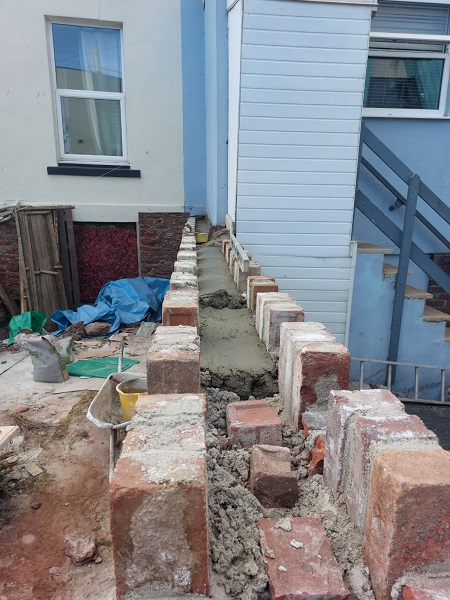
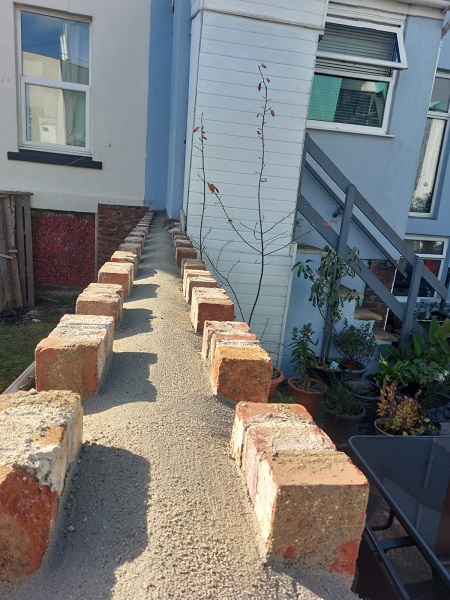
And that was the job completed.
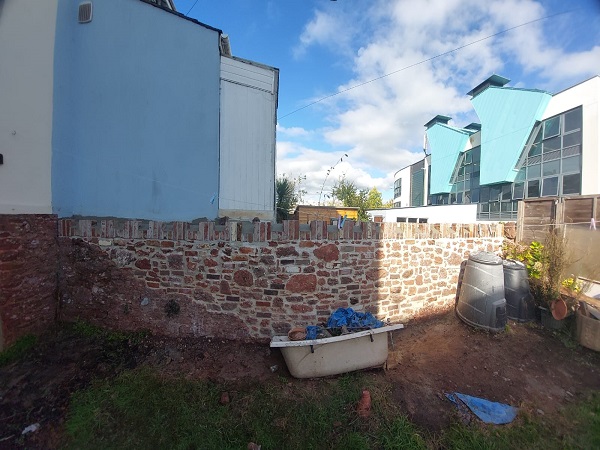
The stone used to build this wall is called ‘New Red Sandstone’. It’s not new by any means as it was first laid down during the ‘Permian’ period three hundred million years ago. Most of the Permian layer contains this red sandstone and, where it’s found, it is indicative of these areas being a hot and arid environment during that time. The sandstone is monomineralic, consisting only of quartz grains although negligible amounts of other minerals may be present. They are cemented together with the ferric iron oxide ‘Haematite’. It is this particular iron oxide that gives the stone its distinctive blood red colour. For centuries this stone has been used for building. Even the Romans used it to build the ancient city walls of Isca Dumnoniorum in nearby Exeter almost two thousand years ago. Parts of those city walls still stand to this day.


